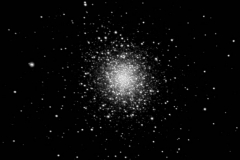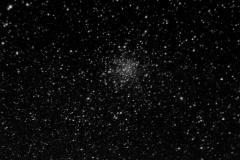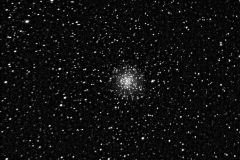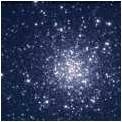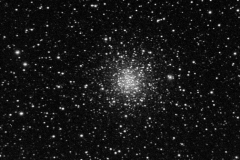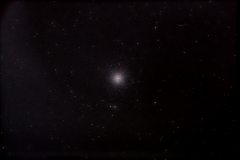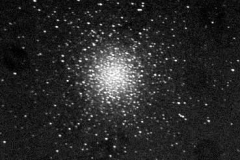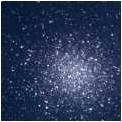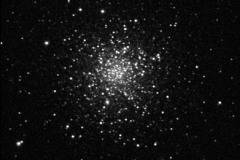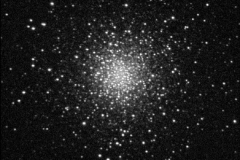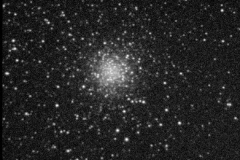[et_pb_section fb_built="1" _builder_version="3.22"][et_pb_row _builder_version="3.25" background_size="initial" background_position="top_left" background_repeat="repeat"][et_pb_column type="4_4" _builder_version="3.25" custom_padding="|||" custom_padding__hover="|||"][et_pb_text _builder_version="3.27.4"]
Globular Cluster M15 (also known as NGC 7078) is a globular cluster in the constellation Pegasus. It was discovered by Jean-Dominique Maraldi in 1746 and included in Charles Messier's catalogue of comet-like objects in 1764. It is estimated to be 13.2 billion years old, one of the oldest globular clusters.
M15 is at a distance of about 33,600 light-years from Earth. It has an absolute magnitude of -9.2 which translates to a total luminosity of 360,000 times that of the Sun. Messier 15 is one of the most densely packed globulars known in the Milky Way galaxy.
[/et_pb_text][/et_pb_column][/et_pb_row][et_pb_row _builder_version="3.25" background_size="initial" background_position="top_left" background_repeat="repeat"][et_pb_column type="4_4" _builder_version="3.25" custom_padding="|||" custom_padding__hover="|||"][et_pb_text admin_label="Images by Simon Dawes" _builder_version="3.27.4" saved_tabs="all" global_module="2572"]
Images by Simon Dawes
[/et_pb_text][/et_pb_column][/et_pb_row][et_pb_row _builder_version="3.25" background_size="initial" background_position="top_left" background_repeat="repeat" column_structure="1_4,1_4,1_4,1_4"][et_pb_column type="1_4" _builder_version="3.25" custom_padding="|||" custom_padding__hover="|||"][et_pb_text admin_label="SD" _builder_version="3.27.4"]

[/et_pb_text][/et_pb_column][et_pb_column type="1_4" _builder_version="3.25" custom_padding="|||" custom_padding__hover="|||"][et_pb_text admin_label="SD" _builder_version="3.27.4"]

[/et_pb_text][/et_pb_column][et_pb_column type="1_4" _builder_version="3.25" custom_padding="|||" custom_padding__hover="|||"][/et_pb_column][et_pb_column type="1_4" _builder_version="3.25" custom_padding="|||" custom_padding__hover="|||"][/et_pb_column][/et_pb_row][et_pb_row _builder_version="4.7.7" _module_preset="default"][et_pb_column _builder_version="4.7.7" _module_preset="default" type="4_4"][et_pb_text admin_label="Images by Neil Webster" _builder_version="3.27.4" saved_tabs="all" global_module="3174"]
Images by Neil Webster
[/et_pb_text][et_pb_text _builder_version="4.7.7" _module_preset="default" hover_enabled="0" sticky_enabled="0"]
[caption id="" align="aligncenter" width="800"]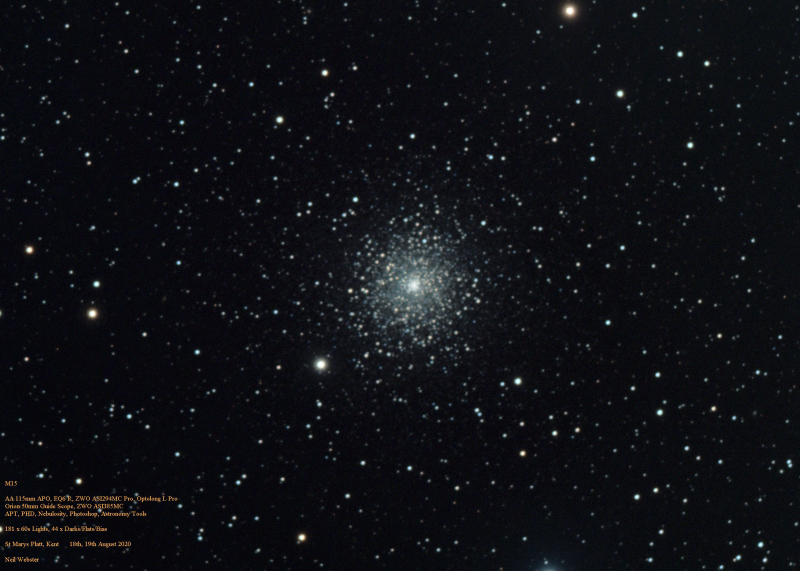 Image by Neil Webster - details not provided[/caption]
Image by Neil Webster - details not provided[/caption]
[/et_pb_text][/et_pb_column][/et_pb_row][/et_pb_section]
 Image by Leigh Slomer - no details provided[/caption]
Image by Leigh Slomer - no details provided[/caption]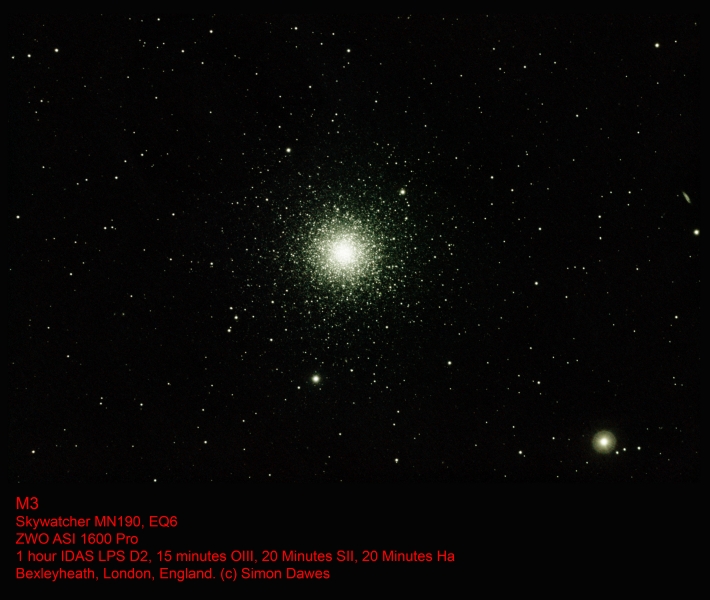 Image by Simon Dawes SkyWatcher, MN190, EQ6, ZWO ASI1600MM[/caption]
Image by Simon Dawes SkyWatcher, MN190, EQ6, ZWO ASI1600MM[/caption]

